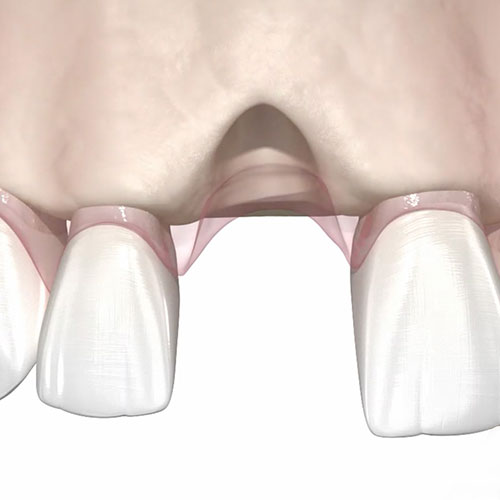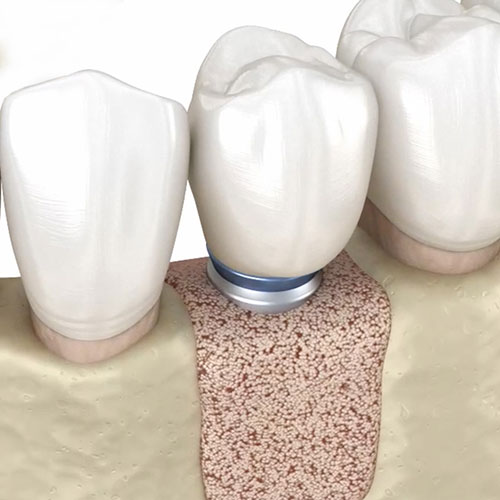Bone Grafting NYC
Bone Grafts For Oral Surgery In Midtown Manhattan
Bone grafting is a specialized procedure performed to restore or augment bone tissue in areas where it is deficient or has been damaged. This surgical technique involves the transplantation or placement of bone or bone-like materials to encourage new bone growth and facilitate the healing process.
Key benefits of Bone Grafting
Foundation for Dental Implants: Bone grafting provides the necessary bone volume and density, making it possible for patients to receive dental implants when they otherwise couldn’t due to insufficient bone.
Preservation of Facial Structure: By restoring the jawbone’s integrity, bone grafting helps maintain the natural shape and contour of the face, preventing the sunken appearance that can occur with bone loss.
Prevention of Bone Loss: After tooth extraction or loss, the jawbone can deteriorate. Bone grafting immediately after extraction can prevent or minimize this bone resorption.
Improved Dental Functionality: A strong jawbone, enhanced by grafting, ensures that dental restorations, like implants, function optimally, allowing for efficient chewing and speaking.
Support for Adjacent Teeth: By reinforcing the jawbone, bone grafting can provide better support to surrounding teeth, preventing them from shifting or becoming unstable.
Enhanced Aesthetics: In addition to preserving facial structure, bone grafting can improve gum aesthetics, ensuring a more natural and pleasing appearance around dental restorations.
Stabilization: In cases of periodontal disease, bone grafting can help stabilize teeth that might be at risk of becoming loose due to bone loss.
Natural Integration: The materials used in bone grafting, whether from the patient’s body, a donor, or synthetic sources, are biocompatible and integrate well with the patient’s natural bone over time.
High Success Rate: With modern techniques and materials, dental bone grafting has a high success rate, leading to predictable and effective outcomes for patients.
Versatility: Bone grafting can address various dental issues, from preparing for implants to treating bone defects resulting from cysts, tumors, or trauma.
Why Do I Need Bone Grafting for Dental Implants?

The primary purpose of bone grafting is to provide a stable foundation for dental implants, enhance bone density, correct deformities, or repair bone loss caused by factors such as trauma, infection, or tooth extraction. By rebuilding the bone structure, bone grafting sets the stage for successful dental implant placement or improves overall oral health and aesthetics.
What are the Different Types of Bone Grafts?
Autogenous Bone Grafts
Autogenous bone grafts, also known as autografts, are made from your own bone, taken from somewhere else in the body. The bone is typically harvested from the chin, jaw, lower leg bone, hip, or the skull. Autogenous bone grafts are advantageous in that the graft material is your own live bone, meaning it contains living cellular elements that enhances bone growth, also eliminating the risk of your body rejecting the graft material since it comes from you.
However, one downside to the autograft is that it requires a second procedure to harvest bone from elsewhere in the body. Depending on your condition, a second procedure may not be recommended.
Allogenic Bone
Allogenic bone, or allograft, is dead bone harvested from a cadaver, then processed using a freeze-dry method to extract the water via a vacuum. Unlike autogenous bone, allogenic bone cannot produce new bone on it’s own. Rather, it serves as a framework, or scaffold, over which bone from the surrounding bony walls can grow to fill the defect or void.
Xenogenic Bone
Xenogenic bone is derived from non-living bone of another species, usually a cow. The bone is processed at very high temperatures to avoid the potential for immune rejection and contamination. Like allogenic grafts, xenogenic grafts serve as a framework for bone from the surrounding area to grow and fill the void.
Both allogenic and xenogenic bone grafting have the advantage of not requiring a second procedure to harvest your own bone, as with autografts. However, because these options lack autograft’s bone-forming properties, bone regeneration may take longer than with autografts and have a less predictable outcome.
What are Bone Graft Substitutes?
As a substitute to using real bone many synthetic materials are available as safe and proven alternatives, including:
Demineralized Bone Matrix (DBM)/Demineralized Freeze-Dried Bone Allograft (DFDBA)
This product is processed allograft bone, containing collagen, proteins, and growth factors that are extracted from the allograft bone. It is available in the form of powder, putty, chips, or as a gel that can be injected through a syringe.
Graft Composites
Graft composites consist of other bone graft materials and growth factors to achieve the benefits of a variety of substances. Some combinations may include: collagen/ceramic composite, which closely resembles the composition of natural bone, DBM combined with bone marrow cells, which aid in the growth of new bone, or a collagen/ceramic/autograft composite.
Bone Morphogenetic Proteins
Bone morphogenetic proteins (BMPs) are proteins naturally produced in the body that promote and regulate bone formation and healing.
Synthetic materials also have the advantage of not requiring a second procedure to harvest bone, reducing risk and pain. Each bone grafting option has its own risks and benefits. Dr. Hershkin will determine which type of bone graft material best suited to your particular needs.
What Can I Expect During Bone Grafting Surgery?
The bone grafting procedure typically involves several steps. First, a thorough assessment of your bone structure and dental condition is conducted. This may include digital imaging and scans to evaluate the extent of bone loss and determine the most appropriate grafting technique for your case.
During the actual grafting procedure, our skilled oral and maxillofacial surgeon will administer local or general anesthesia to ensure your comfort. The grafting material, which may come from your own body (autograft), a donor (allograft), or synthetic materials, will be placed in the targeted area. This graft acts as a scaffold, promoting the growth of new bone cells and integrating with your natural bone over time.
How is the Recovery After Bone Grafting?

The recovery period after bone grafting is essential for successful outcomes. Following the procedure, you may experience some swelling, discomfort, and possibly minor bleeding. Our team will provide you with specific post-operative instructions to follow, including pain management strategies, dietary recommendations, and oral hygiene practices.
During the recovery period, it is crucial to maintain proper oral hygiene and follow any dietary restrictions provided. It is normal to experience some initial limitations in jaw movement or sensitivity in the grafted area. Our team will closely monitor your progress and schedule follow-up appointments to assess healing and address any concerns or questions you may have.
Bone grafting is a highly effective and proven technique for restoring bone structure and creating a solid foundation for future dental procedures. It offers numerous benefits, including improved oral function, enhanced aesthetics, and the opportunity for successful dental implant placement.